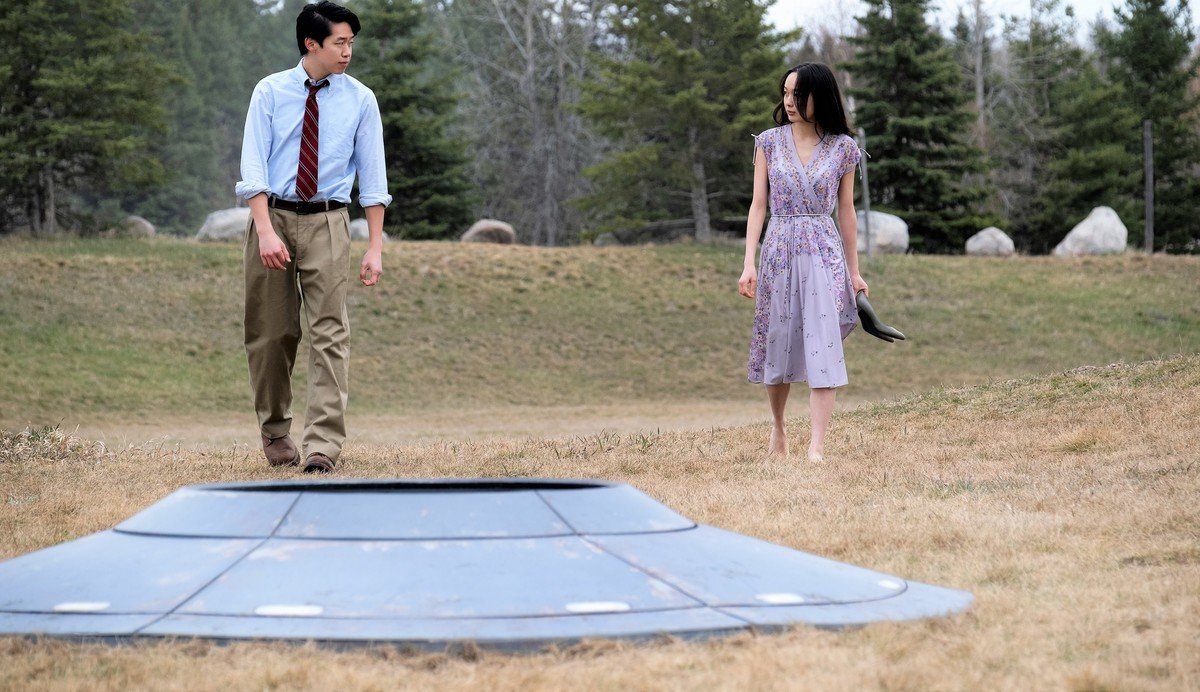

An Amazon original series now streamable on Prime, Tales from the Loop offers a set of loosely interrelated meditations upon ephemerality, the impact of technology, and human vulnerability infused with a mild science fiction savour.
As slow-moving mood pieces, each of the eight hour-long episodes brings together a familiar experience of grief with some gently speculative conceit.
One character loses a child and then compensates with the purchase of a semi-anthropomorphic robotic car scrapper. Another undertakes a short-lived romance with the aid of a device that stops time. A third faces the abandonment of a parent through a physics-defying conversation with her childhood self.
Considered as scientific or technological think-pieces, it can be safely suggested that there is relatively little rigour or originality on display here. Rather, the emphasis of the series would seem to fall upon sparking just enough intellectual curiosity to deliver audiences a regimen of reflection upon perennial questions arising within human relationships.
Yet the most interesting aspect of the series is probably its peculiar aesthetic. Channelling a sensibility some have dubbed retrofuturism, the style dresses up currently undiscovered scientific capabilities in the boxy, outdated fittings of mid-20th-century tech.
For example, characters dressed in drab 1960s cardigans walk the streets of a typical small-town America of yesteryear, against whose horizon are dotted the silos of a next-generation MacBook-looking power plant. A Sputnik-looking rusty steel sphere stumbled across in the woods harnesses the power to let persons exchange bodies. A clunky combine harvester just so happens to be a hovercraft.
The effect is a beguiling fusion of forward-looking nostalgia, a sense that this fictional world has both superseded and better preserved elements of the pre-Information Era near past.
Beautiful and mildly disorienting, these odd-angled juxtapositions of past and future are presumably intended to intersect at tangents with the humanity of any age.
It bears repeating that the stories are not particularly ambitious in ideational destination, and they do take their time in getting there. But viewers who do not mind a leisurely arthouse pacing and can delight in a simply elegant, nicely put together scene will find plenty of pleasure in these lingering gazes upon days future-past.
It should also be mentioned that some of the individual episodes are more successful (and appropriate) than others (guidance concerning the sexual content in some episodes can be readily accessed on a site like IMDb or Common Sense Media).
Yet taken as a whole, it would seem that the series’ principal wish is to serve as a reminder – particularly to viewers in an increasingly technological age, ever more obsessed with frenetic ambitions to accelerate and advance – of something fundamental.
Many of us in recent months have had no choice but to step back from our advancing. Some of us have perhaps even taken a few uncustomary strolls through neighbourhoods momentarily transfigured into images of slower, simpler times.
Yet as we gradually break out of this virus-thrown loop and back into our usual routines, it would seem a timely perspective, as this series reminds us, to prioritize those fragile, sometimes fleeting human connections that make the whole clanking, ever-advancing effort of society amount to more than the sum of its parts.
(Originally published in The B.C. Catholic)
